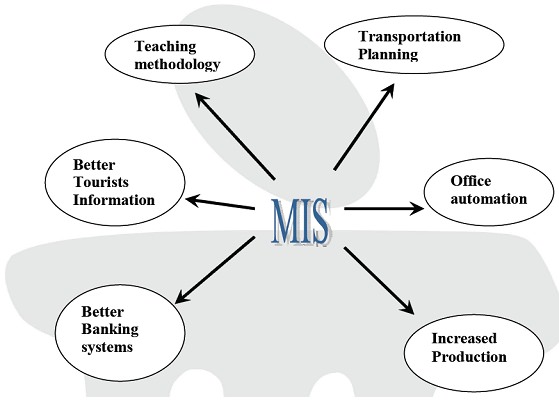Management information systems (MIS) are the backbone of modern businesses, providing critical insights into operations and facilitating strategic decision-making. Imagine having a crystal ball that reveals crucial insights into sales trends, customer behavior, and operational performance. That’s the power of a well-designed and implemented MIS. However, many businesses struggle with inefficient systems, outdated data, and a lack of clear actionable strategies. This article aims to provide a comprehensive understanding of effective MIS strategies and help you design and implement one that empowers your organization to optimize performance and gain a competitive edge in the marketplace. We will cover the essential elements of an effective MIS, from design to implementation, along with common challenges and solutions. The structure of this article will proceed as follows: first, we will define MIS and identify the core components. Then we will delve into the strategic and operational aspects of system design and implementation. Finally, we will cover crucial components for the ongoing success of your MIS.
Defining and Understanding Management Information Systems
Core Components of an MIS
Management Information Systems (MIS) are integrated systems that collect, process, and disseminate information to support decision-making and problem-solving within an organization. These systems encompass various components, including hardware, software, data, procedures, and people. A well-structured MIS provides a centralized platform for gathering and analyzing data, helping organizations make informed business decisions. For example, a company can use an MIS to track sales figures, inventory levels, customer interactions, and financial performance. By analyzing this data, managers can identify trends, anticipate problems, and make informed decisions. A well-designed system should include user-friendly interfaces, allowing diverse departments to access the information necessary to perform their duties efficiently. Modern MIS solutions often employ cloud technology for scalability and accessibility, while leveraging advanced analytics for data-driven insights.
Strategic Aspects of MIS Design and Implementation
Aligning MIS with Business Strategy
Aligning the MIS with the overall business strategy is crucial for success. This entails understanding the business goals and objectives and designing the system to support and achieve these goals. Businesses must establish clear objectives before designing their MIS. For example, if a company’s main objective is to increase sales by 15% in the next quarter, the MIS should be designed to provide insights into sales trends and customer behavior. The system should support data analysis to identify key performance indicators (KPIs) that can drive targeted strategies. This alignment ensures that the MIS supports the organization’s mission, objectives, and long-term goals. In essence, the MIS should act as a tool that empowers employees to achieve the company’s objectives. Furthermore, consider user needs and expectations when developing the user interface of the system. Easy-to-understand reports and dashboards are crucial for effective decision-making.
Operational Aspects of MIS Design and Implementation
Streamlining Operations with MIS
Effective MIS implementation streamlines operational processes by automating tasks, enhancing data accuracy, and improving communication. By automating tasks, companies can free up employees for more strategic initiatives. This increased efficiency translates to cost savings and reduced errors. Data accuracy is crucial because inaccurate data leads to flawed decisions. An MIS can help ensure data integrity and consistency, leading to more reliable information for strategic decision-making. This aspect ensures that departments and teams work in synergy to accomplish overall company goals. A good example would be a hospital using an MIS to track patient records and manage appointments. This streamlines patient care and reduces administrative burdens, making the overall hospital more efficient.
Implementing and Managing an Effective MIS
Data Security and Privacy Considerations
Implementing and managing an effective MIS also involves addressing data security and privacy concerns. Data breaches can have severe repercussions for businesses, affecting reputation and potentially leading to significant financial losses. A robust data security strategy involves implementing strong access controls, regular security audits, and adhering to data privacy regulations. This crucial step ensures the safety and integrity of sensitive data. Implementing encryption protocols and regularly monitoring security threats can help protect the system from cyberattacks and data breaches. Furthermore, clear policies regarding data access, usage, and security should be communicated to all relevant parties. Examples include setting user permissions and implementing access control lists, which are security measures that limit data access based on user roles.
Ensuring Ongoing Success of MIS
Continuous Improvement and Adaptability
Effective MIS systems require ongoing maintenance and adaptation to remain relevant and effective. Regular updates and enhancements to software and hardware are needed to keep up with technological advancements and changing business needs. By regularly updating and enhancing the MIS, organizations can maintain optimal functionality and avoid potential downtime or system errors. Monitoring and analyzing system performance metrics is crucial to identify areas for improvement. For example, a company may notice a significant increase in response time for specific queries in the system, which can then be addressed through system updates and optimized data management strategies. This constant review and adaptation allows the MIS to remain a powerful tool for driving operational excellence.
In conclusion, effective management information systems (MIS) are crucial for strategic decision-making and operational efficiency in today’s businesses. By understanding the core components, challenges, and best practices of implementing and managing an MIS, organizations can leverage data-driven insights to gain a competitive edge. Implement the strategies outlined in this article to optimize your MIS and unlock its full potential. If you’re still facing challenges in implementing or optimizing your MIS, consider consulting with a professional MIS consultant. They can provide specialized guidance and support, helping you overcome hurdles and reach your desired outcomes.
